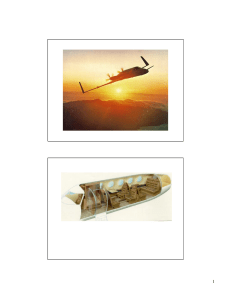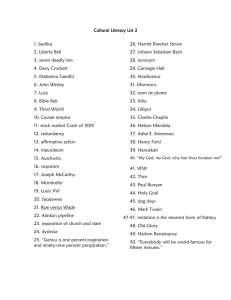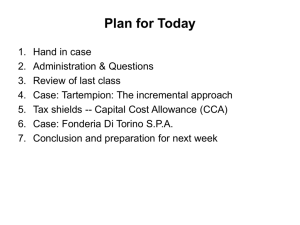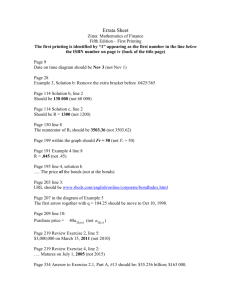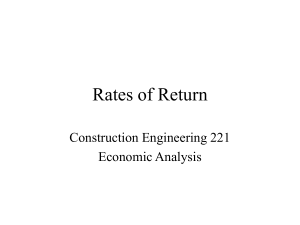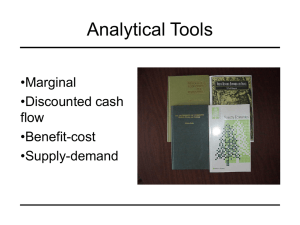FINAL PPT
advertisement
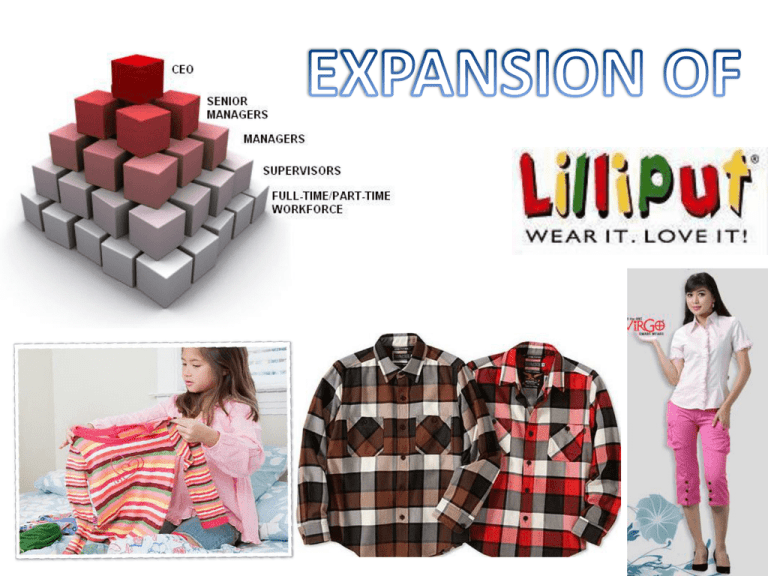
• To apply the class room learning into project to find out whether it is feasible or not • To have an fair idea about setting up of a new garments manufacturing unit . • To evaluate the project viability by financial analysis . • Lilliput has major portion of production in their Faridabad unit supported with a merchandising unit • They take orders between 3-16 years of age. • This was first time that the unit got a proposal to produce a garment for 17-19 years • Lilliput has a strong presence in both domestic and international markets in Kids wear • It's growing @ 20% Per Annum which makes it one of the fastest growing markets • The response was very good from the buyer. • They received order for a style got selected for the production. That was the continuous order for 5 years . • But the existing capacity was not enough to meet the increased production requirement . • Therefore the company is looking forward for expansion in this area • 172 exclusive brand outlets • 150 key multi brand outlets like Shopper's Stop, Lifestyle, Pantaloon, Reliance Trends, Pyramids and more • Lilliput Stores are evenly spread across 18 States, 35 Cities and 115 Stores & is still growing • 50 more stores are expected • Actual production on 70% efficiency • Fulfilling the demands and requirements of the domestic as well as international market. • The proposed unit would be having high-end manufacturing facility • producing high quality apparels especially garments for teenagers . • The unit would be set up on 18000 sq ft of land and would be housed in multi-storey buildings • Producing for 17-19 years old girls & boys. Five year costing has been done taking into consideration a polyester top because of its easy availability compounded by the fact that the garment has a design which is useful for material costing. •Major portion of investment is made in the machinery purchased for finishing department •Finishing department are costly like needle detector , tumble dryer, steam irons and washing machines . SAM = 13.40 MINS PRIME COST DIRECT LABOUR 14% DIRECT MATERIAL 86% DIRECT EXPENSE 0% •Comparison of operating profit and net profit of business. •In the year 1 (2009-2010) company is making high loss •Because of the high interest on loan and NIL of beginning WIP and finished goods. •In the year 3 (2011-2012) company is making maximum profit • In the year 1 (2009-2010) company is making losses , so the BREAK EVEN SALES has calculated for the same •line inter crossing the actual sales line at some point showing the deficiency of units to be produced which is MARGIN OF SAFETY GAP •NPV is in (-)I've •A tremendous increase in the fifth year •And NPV is going down by 3.5 crore. •Initial investment is too high or the cash flows are not appropriate. •The project is feasible and logical NET LOSS % AGE -2.19 -5.87 -9.32 1.24 •For viability NPV >0 •Current situation NPV <0 (- 3.5 crore) •Initial investments are much higher in comparison to cash flows •Overheads are on the higher side . •IRR is 0.5 % ( because of involvement of high capital but extreme less cash flows) •Cash inflows should be increased . •Working capital calculations can also be taken into consideration for better results . •Because of all these factors , project is not VIABLE . EXPANSION AKANKSHA ANKIT CHITRA NITIN


